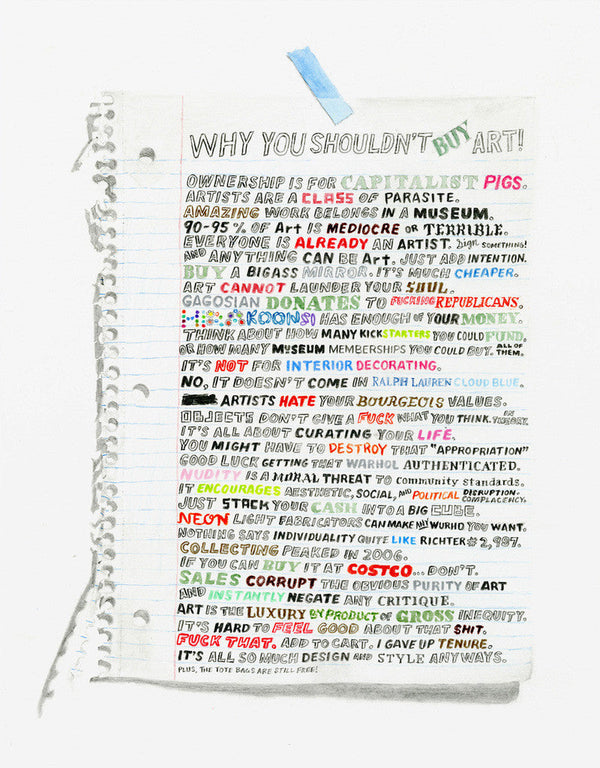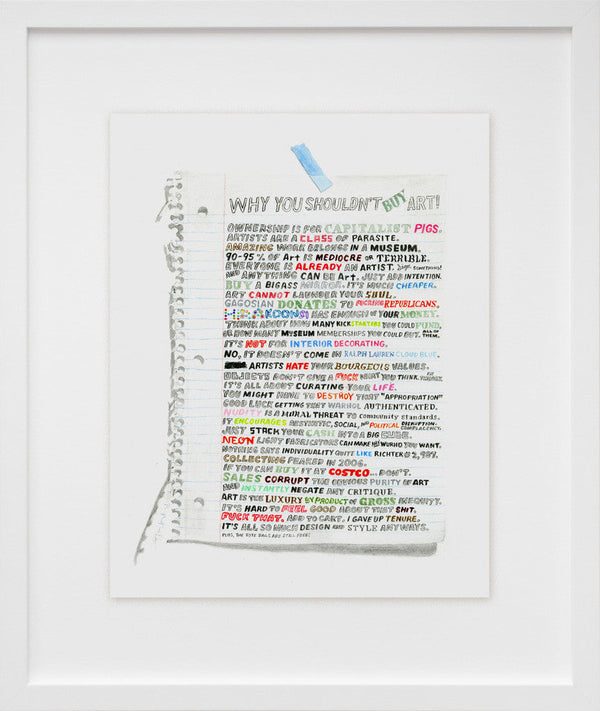"I told people that art intoxicates, that art and its abstractions are the most powerful form of communication, and that luxury actually humiliates the world." , Jeff Koons
"Jeff Koons' 'Tulips' must smell good because @ChristiesInc just sold it for a record $30m hammer, a new auction high bar for the sculptor" , @KellyCrowWSJ
"...the art market has stopped being a source of fascination and crazy numbers, and has started to be a source of sheer disgust." , Felix Salmon
"I don't know the answer to that." , Larry Gagosian
"The more money art fetches, the more likely it is to stay hidden from the public's eyes_ which risks pulling it right out of our society's shared culture. In an ideal world, wouldn't we want more art, by more artists, to sell to more people, for less?" , Blake Gopnik
"We are working together to replace the exchange of capital with a creative exchange for and by the 99%. As we seek horizontal spaces for dialogue and collaboration, we begin to fill the hollowness of the capitalist art market with the warmth of meaning and the conviction that art is a necessity, not a luxury." , Occupy Museums
If you're looking at this statement, odds are heavily in my favor that you can't afford a Jeff Koons sculpture. You probably don't have $30 million dollars in an offshore bank account, yet you probably like art. I like art, too, but I've spent a lot of time thinking about the contradictions and paradoxes represented in these quotes almost to the point of total inaction. I agree with Koons. Art has become a luxury commodity that humiliates the world. Reading Kelly Crow's twitter feed on auction prices fills me with disgust and humiliation for participating in the primary art market. When challenged about the apparent hypocrisy of trying to critique the system and earn any money, I feel like Larry Gagosian trying to answer a question about how a painting, sold to an American, ended up coming from a London Gallery. The answer exists somewhere between the pragmatic observation of Blake Gopnik about wanting to sell art to more people for less, and the principled, idealistic position of Occupy Museums wanting to replace the capital exchange of art altogether. In principle, I agree with Occupy Museums' position that art is a necessity, not a luxury. I also think the call to replace capital exchange in its entirety is a basic denial of our shared reality. We engage in capital exchange every day and continually make capital judgments. Unfortunately, the principled position must deny differences within the market in order to critique the highest levels of capital exchange that have humiliated the world. You only have to pay passing attention to the news. As an artist, I must consider some level of rational self-interest. If I can sell art, if there is a market composed of people willing to pay for art, should I not try to be self-sufficient? The principled position says no, there is only a corrupt capitalist economic system where power resides at the top and provides the standard by which all art, all value, is judged to be inferior. The choice is a matter of kind, not a matter of degree. The pragmatic position says yes, labor should be valued and people should be paid for their work. This includes the labor of the artist, as the existence of Arts and Labor within the Occupy movement suggests. I think this is important and isn't my dilemma alone. It is shared by any artist who sells work and anyone who can afford to buy art, whether it is for $20 (plus tax and shipping and handling) or for $20 million (plus auction fees, fine art handling, taxes and insurance). Felix Salmon, a financial blogger and art collector, has used my work to try and explain how the highest levels of the art market work: "It's fine to commercialize art, to sell it, to make money off it. Indeed, I wish that many more fine artists could do so. But let's do so on a human scale. Because today's art market is so much less than that." 20x200 is one opportunity to offer art on a human scale out of personal necessity and to make the price itself a political statement. This edition is very much about the ambivalence of making art within a market economy. I do this in spite of the disgust and humiliation of luxury.






